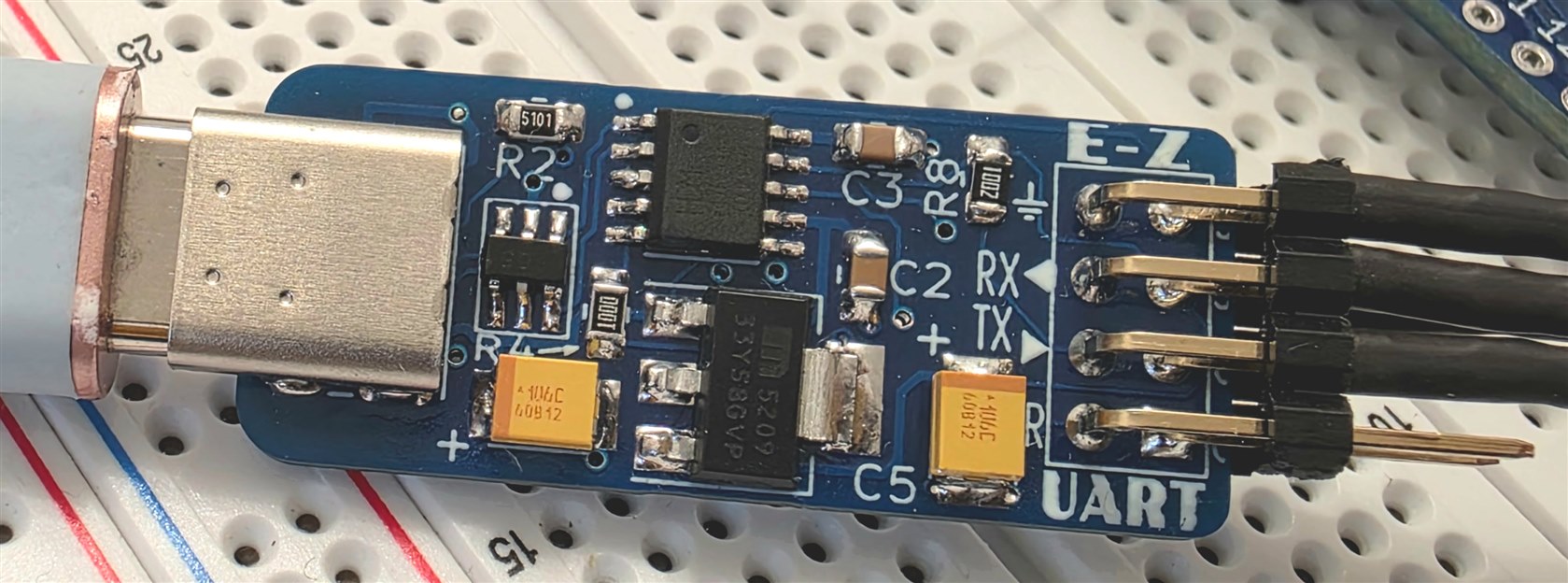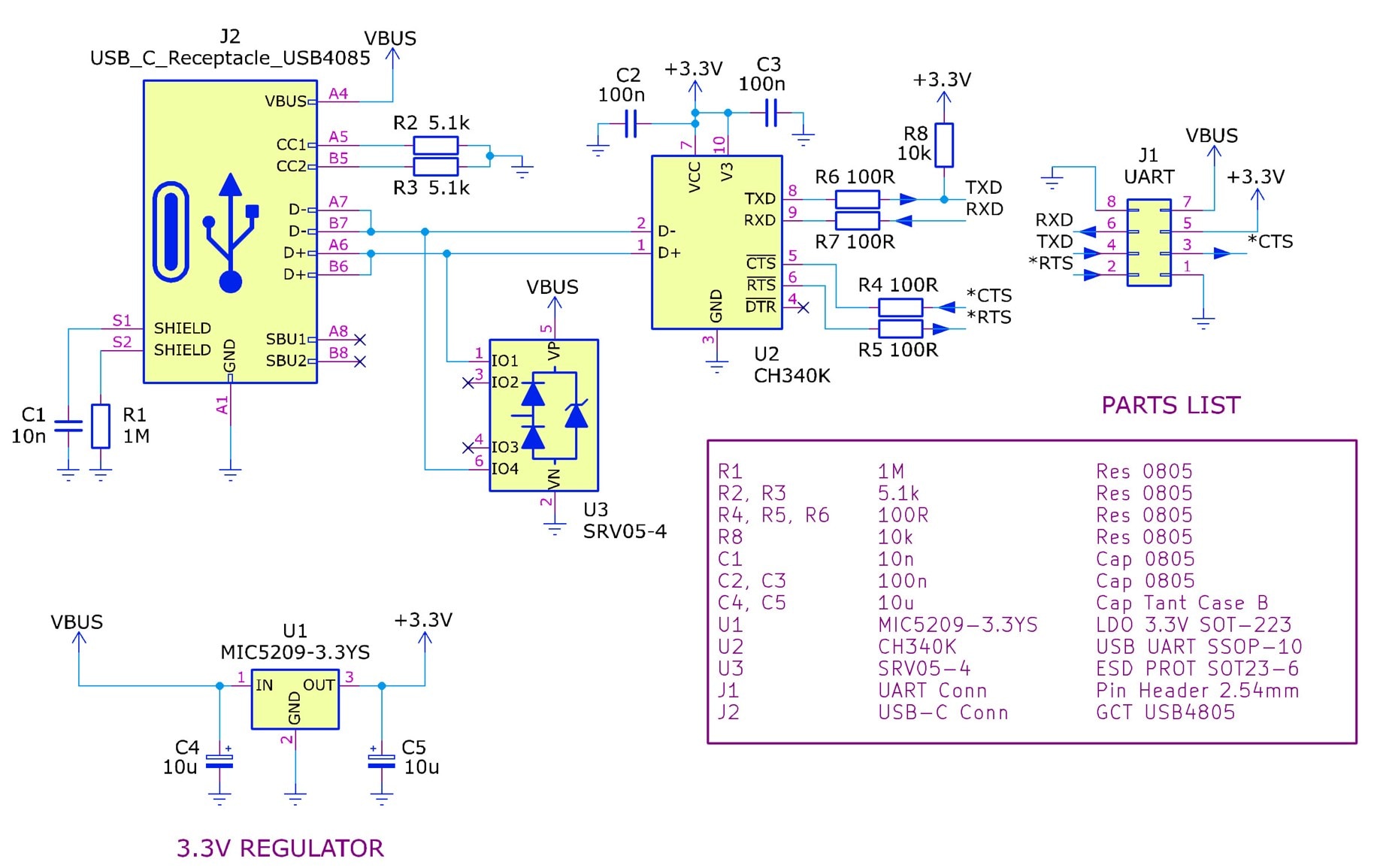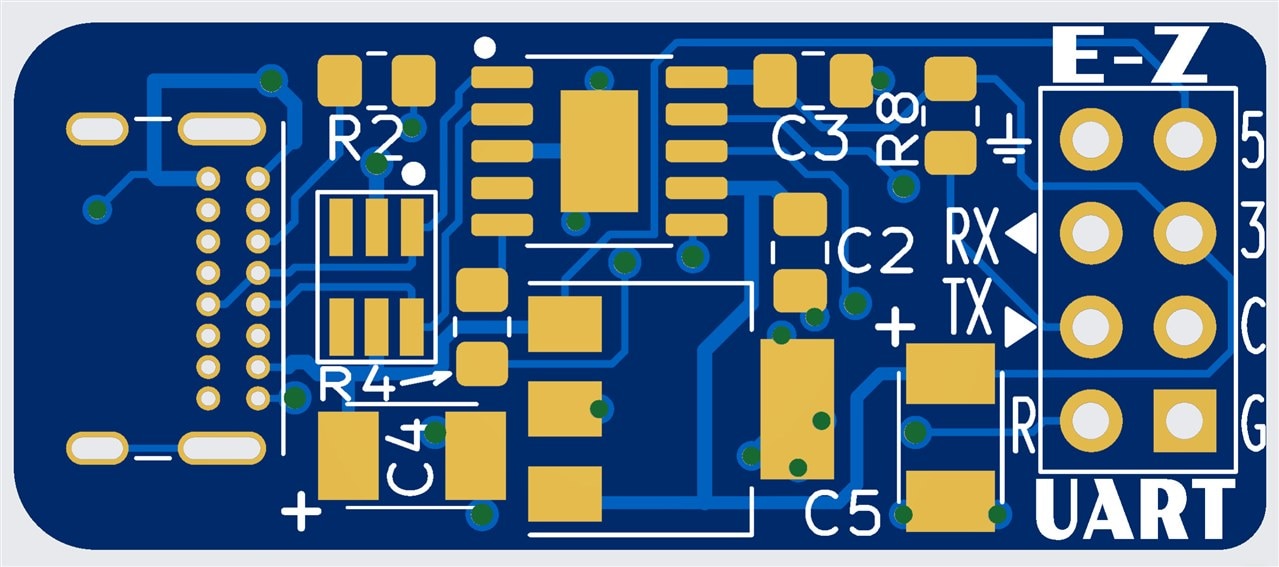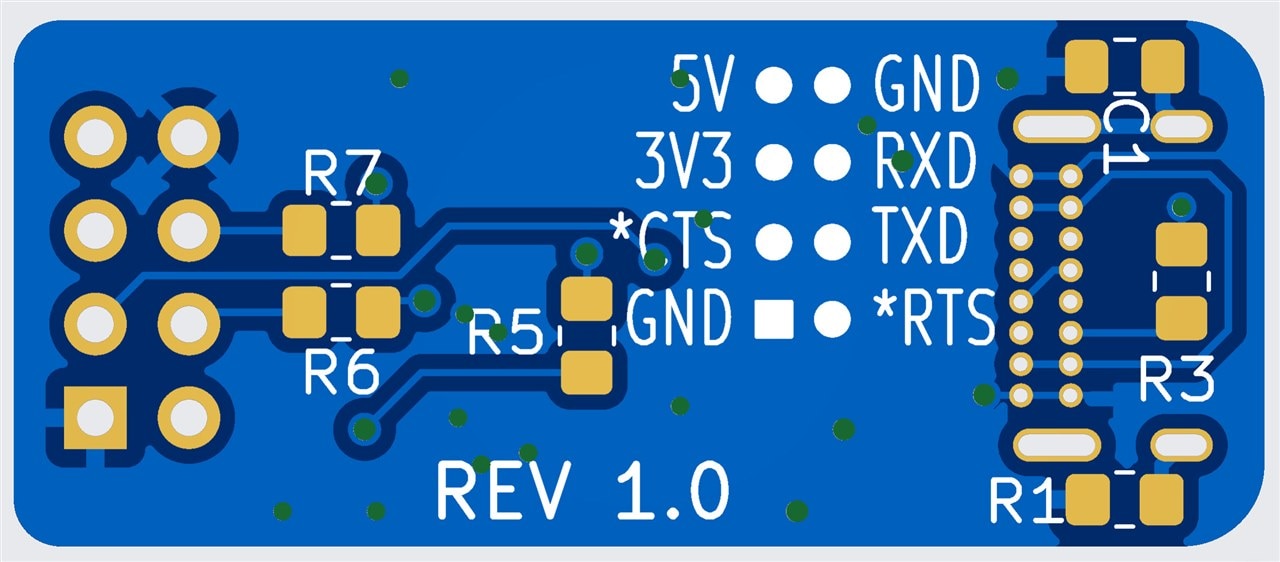Table of Contents
Introduction
USB-to-UART adapters are extremely useful when connecting devices, as UART is a widely standard protocol available on many microcontrollers and peripherals, such as GPS modules.
Although they don't cost a lot to purchase ready-made, it can be useful to have a custom design that can be dropped into new circuits. I recently used a CH340K USB-UART chip on a custom board, but I also created a standalone general-purpose USB-UART board with the same chip, so that I could try it out separately, too.
This very short blog post documents it.

Features
The design is quite basic. For a more feature-rich USB-UART adapter board, see Building a USB-C USB-UART Board and for an even simpler USB-UART board, see Building a USB UART Serial Adapter
Here are the main features:
* USB-C connector
* 3.3V UART only
* USB-powered 3.3V regulator to power external circuits
* RTS and CTS connections available if required
* Very small (yet easy to solder!): 34 x 14 mm
Circuit Diagram
The circuit follows one of the examples in the CH340 datasheet, specifically the one in section 7.6 in the datasheet, with some minor differences.
Here is the PDF version of the circuit.

Building It
I sent the E-Z UART Gerbers zip file to a PCB manufacturer. The PCB is easy to assemble, and the smallest passive component is 0805-sized. The USB-C connector may look awkward, but it's remarkably easy to hand-solder. The pins on the USB connector are very short, and don't actually poke out the other side of the board, reducing the risk of shorts there. Solder just wicks into the tiny holes in the PCB, almost eliminating the risk of shorts provided thin solder is used, and a small soldering tip.
Another technique is to force some solder paste into the holes before placing the connector on the board; it works well, but isn't essential.
If you prefer the USB connector pins to protrude slightly on the underside of the board, you can order a 1mm (or 0.8mm) PCB instead of the standard 1.6mm thickness. Again, it's not essential.


Using It
So far, I've only tested up to 115200 baud, and only with Windows. I simply plugged the board into the PC, and it automatically installed a COM port. I've yet to try Linux. I don't think it works on Android without a driver.
Summary
The CH340K was easy to use to assemble up a little USB-UART adapter board, and it seems to work fine.
One thing I wish I'd done is expose the DTR line on the UART connector, which can be something for a future revision.
Thanks for reading!

-

DAB
-
Cancel
-
Vote Up
0
Vote Down
-
-
Sign in to reply
-
More
-
Cancel
Comment-

DAB
-
Cancel
-
Vote Up
0
Vote Down
-
-
Sign in to reply
-
More
-
Cancel
Children